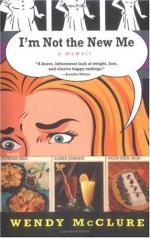Born August 21, 1748, a man over fifty years of age when this century commenced, David may yet be considered entirely our own; for the ideas of his country, despite minor influences that have affected modern art, have prevailed in the art of all other countries, and these principles were largely formulated by him. France has been throughout this century the only country which has steadfastly encouraged art, with a system of education unsurpassed in any epoch, and by the maintenance of a standard which, however rebellious at times, every serious artist has been and is obliged to acknowledge. A cousin—or, as some authorities have it, a grand-nephew—of Boucher (the artist who best typifies the frivolity of the art of the eighteenth century, so that there is grim humor in the thought that this iconoclast was of his blood), David was twenty-seven years of age when, in 1775, he won the Prix de Rome, which enabled him to go to Italy for four years at the expense of the government. He was the pupil of Vien, a painter whose chief merit it was to have inspired his pupil with a hatred of the frivolous Pompadour art of the epoch; and David only obtained the coveted prize after competing five successive years. It is instructive to learn that of this first sojourn at Rome almost nothing remains in the way of painting; for the young artist, endowed with the patience which is, according to Goethe, synonomous with genius, devoted all his time to drawing from the antique.
It was here and during this time, doubtless, that he formed his conviction that painting of the highest type must conform to classical tradition—that all nature was to be remoulded in the form of antique sculpture. But it was also at this time, and owing to his stern apprenticeship to the study of form, that he acquired the mastery of drawing which served him so well when in the presence of nature; and with no other preoccupation than to reproduce his model, he painted the people of his time and produced his greatest works. For by a strange yet not unprecedented contradiction, David’s fame to-day rests, not upon the great classical pictures which were the admiration of his time and by which he thought to be remembered, but on the portraits which, with his mastery of technical acquirement, he painted with surprising truth and reality.
The time was propitious, however, for David. France, the seeds of revolution germinating in its soil, looked upon the Republic of Rome as the type from which a system could be evolved that would usher in a new day of virtuous government; and when, after a second visit to Rome, David returned home with a picture representing the oath of the Horatii, Paris received him with open arms. The picture was exhibited, and viewed by crowds, burning, doubtless, in their turn to have weapons placed in their hands with which to conquer their liberties. This was in 1786; but years after, in the catalogue of the Salon of 1819, we read this note: “The Oath of the Horatii, the first masterpiece which restored to the French school of painting the purity of antique taste.”




